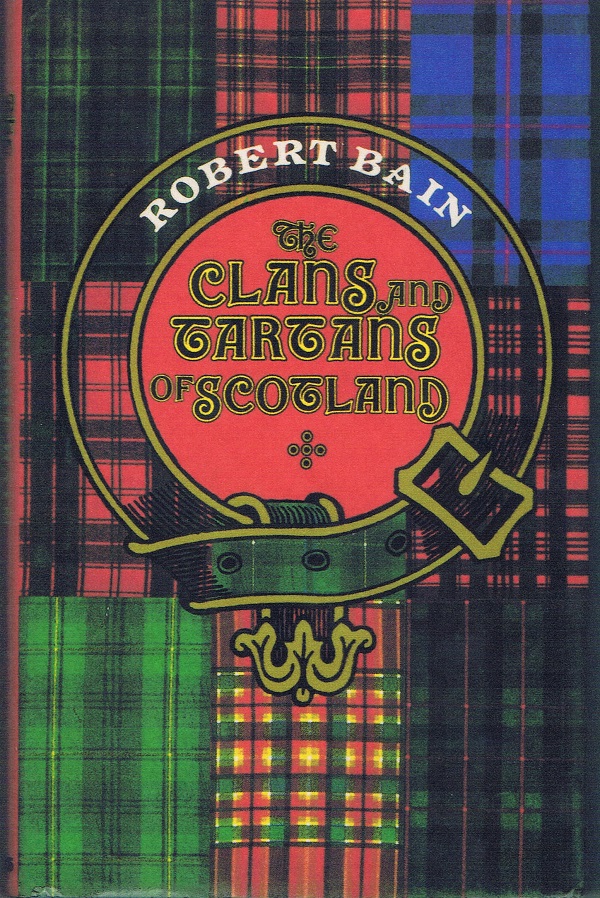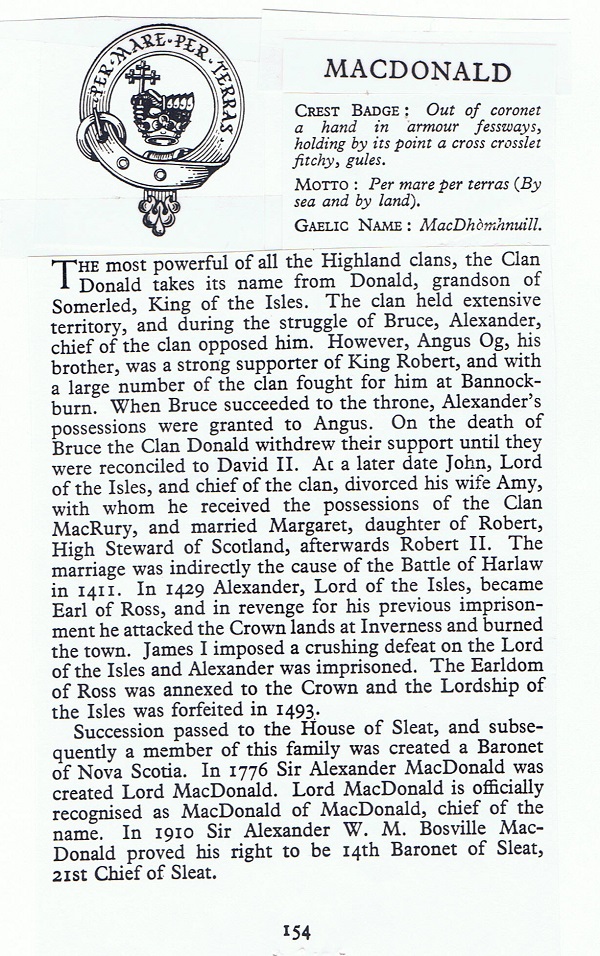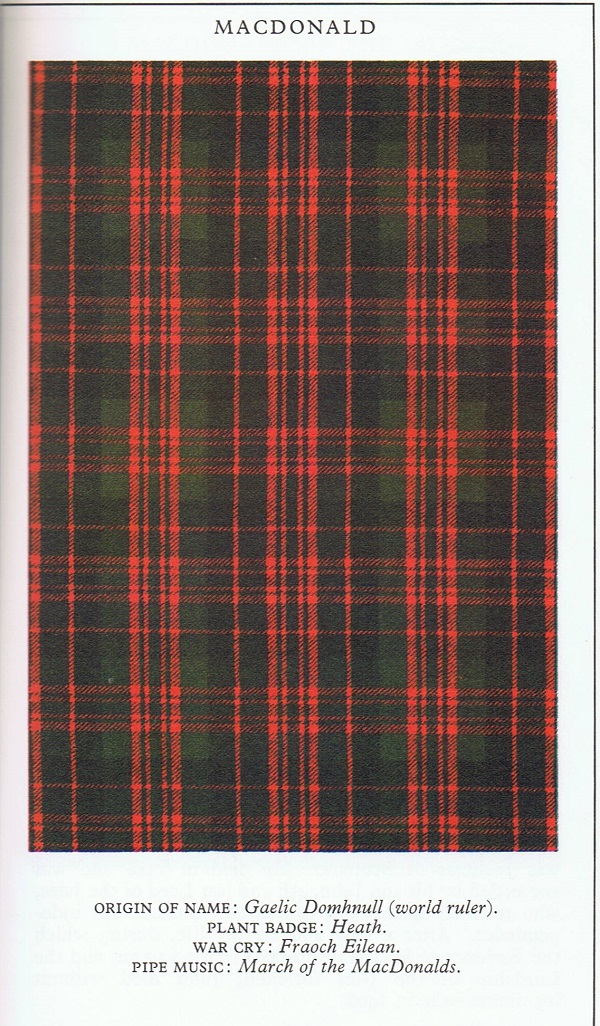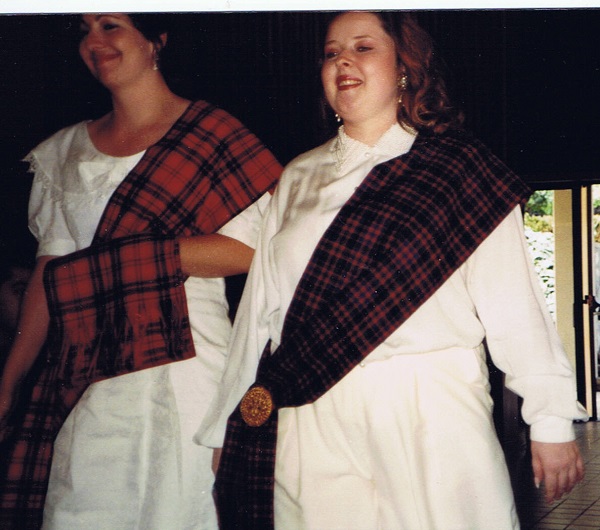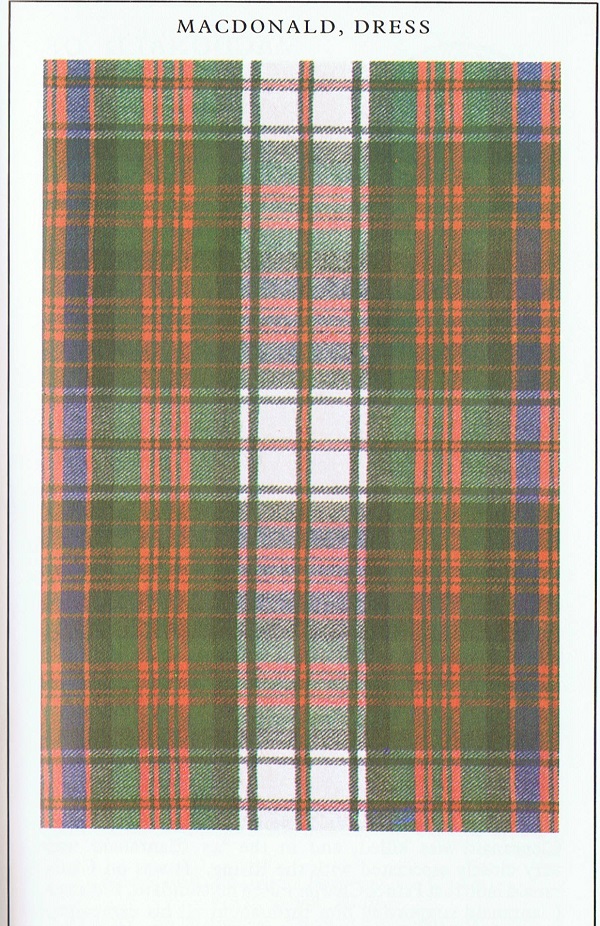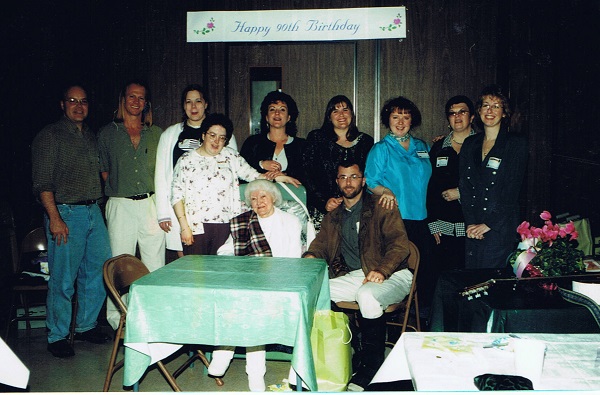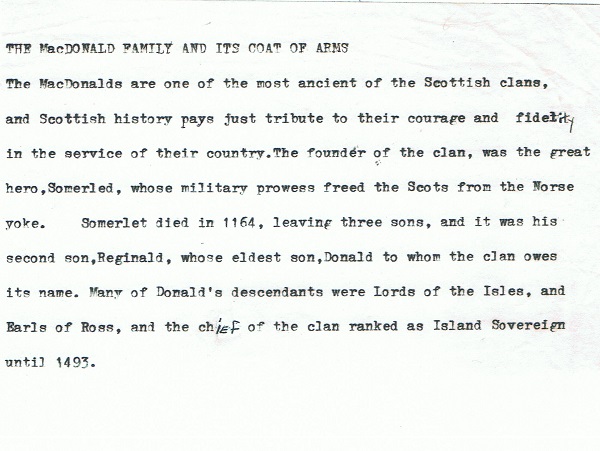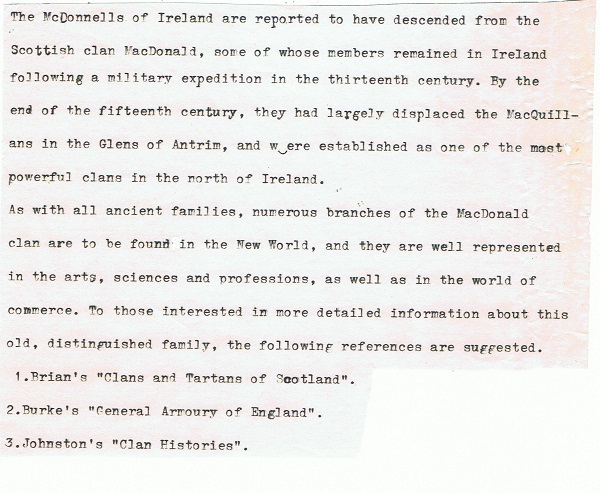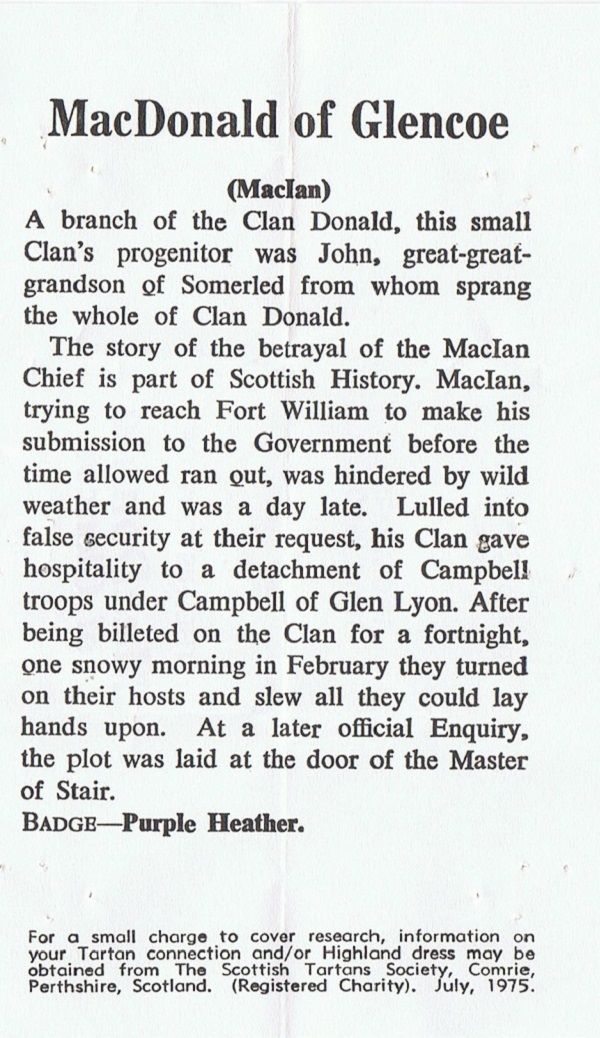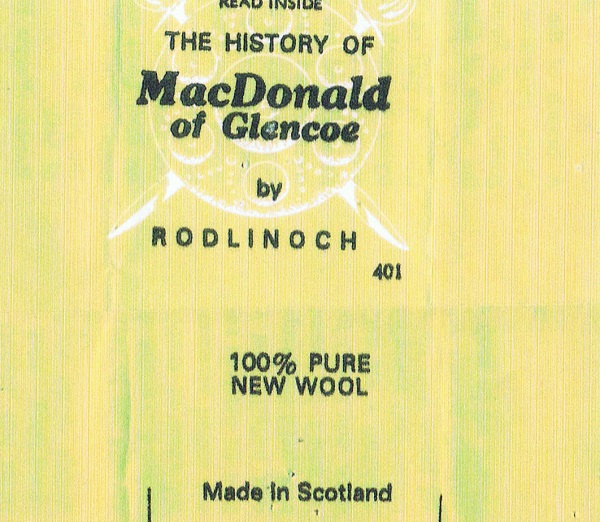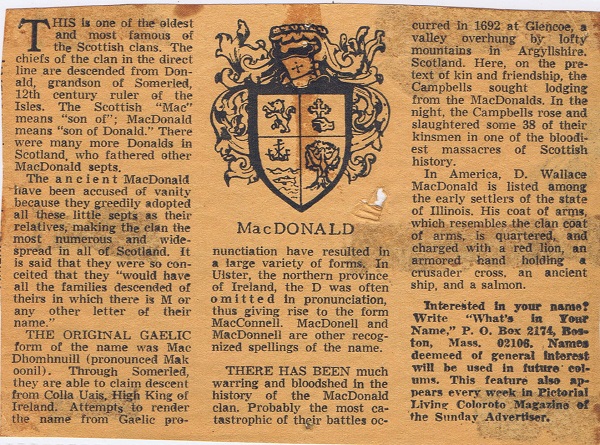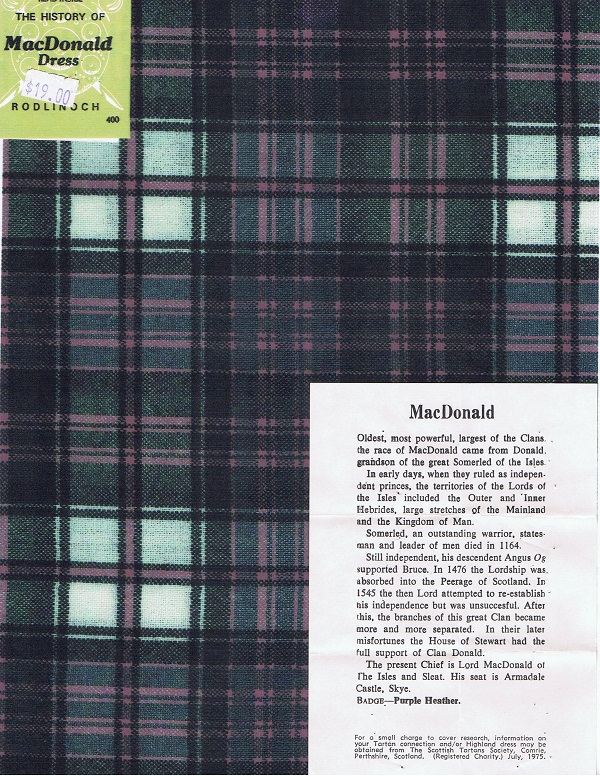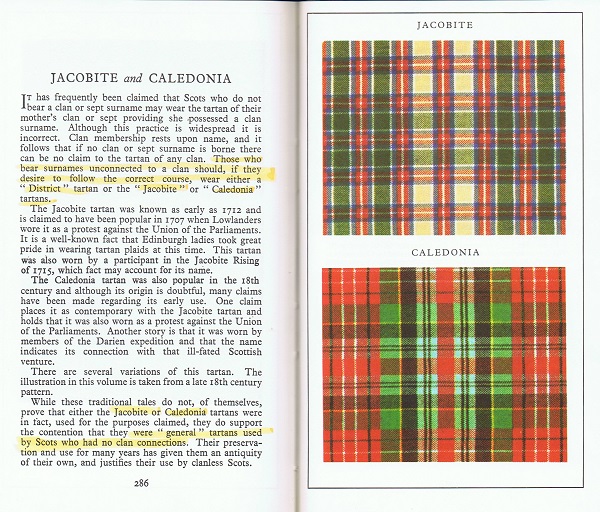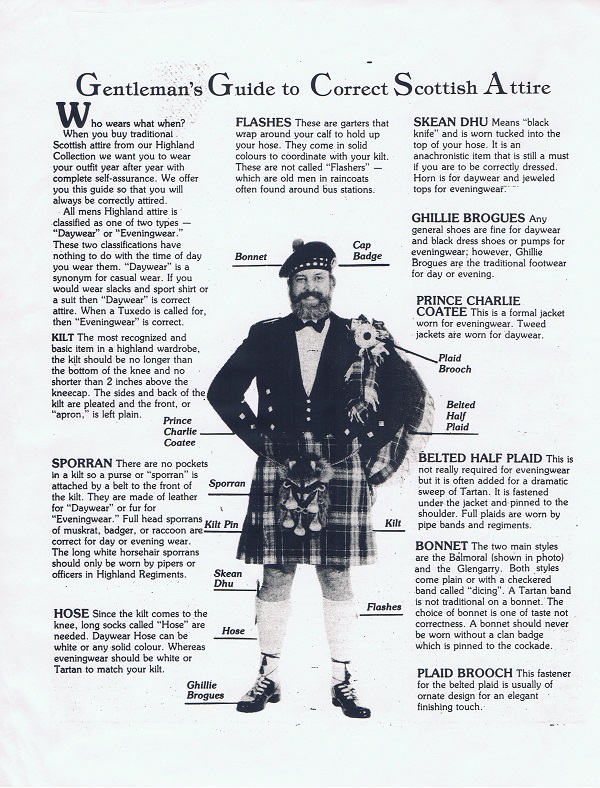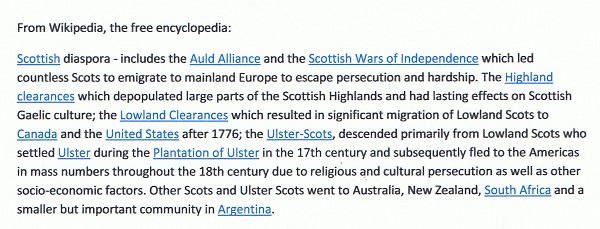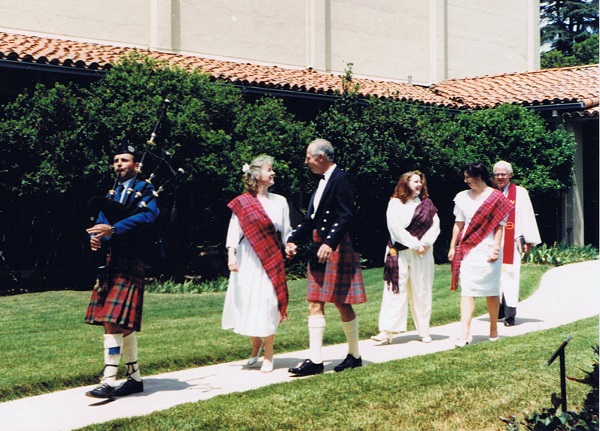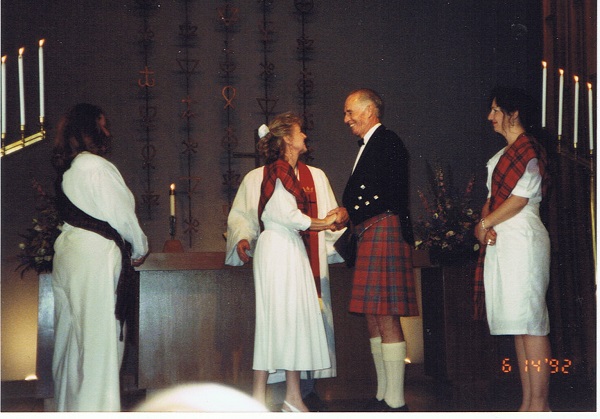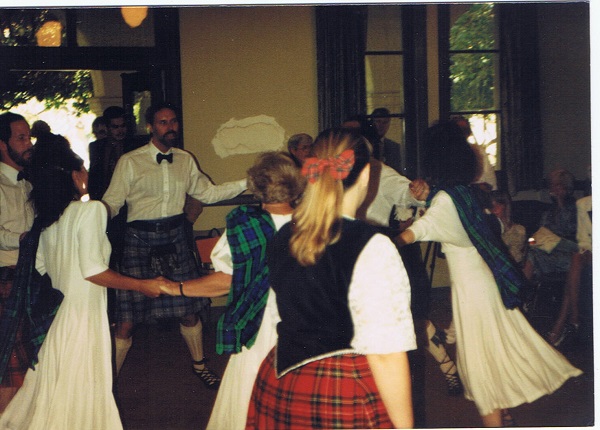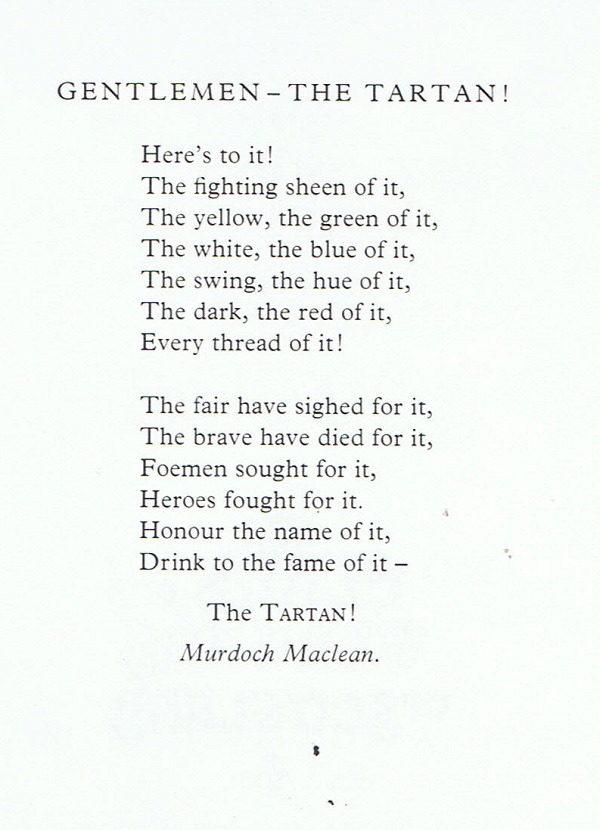The uniqueness of Scotland is the country was divided by various clans. Each clan had its own name (e.g. MacDonald, Campbell, MacGregor, Logan, MacBean, MacKenzie, etc.) and ruled itself and was headed by the Chief of the Clan. Therefore, everyone belonged as everyone had a name. If the clan was too small to protect itself, the clan became a septs under a large clan for protection.
Unfortunately, the clans often fought each other for land, sheep or whatever, and the Scottish men became ferocious fighters. They wore kilts which could be ripped off in battle to protect the fighter from infection from cloth getting into the newly open wound. The fighter always had a knife (sgian-dubh) under his armpit, which was easily pulled out at a moment’s notice. If the man came in peace the knife would be in the top of his sock for everyone to notice.
Also, the clans would band together to fight off a foreign invader. History records the Hadrian’s Wall, (a defensive fortification in Roman Britain, begun in AD 122 during the rule of emperor Hadrian) was built “to separate the Romans from the barbarians” or to keep the Scots out! World War I enemies called the Scottish fighters “the ladies from hell” because they wore kilts and were ferocious. According to Wikipedia, the Free Encyclopedia, “Scottish troops wore kilts up until 1940.”
If a female is born into the clan, she wears her clan’s shawl on the left shoulder, and, likewise, if she marries into a clan, she wears the shawl of her spouse’s clan on her right side. If one is born into one clan and marries into another, it is in poor taste to wear a shawl on both shoulders at the same time!
Photo, left to right, web site author’s daughter-in- law wears her shawl on left shoulder and web site author’s daughter, Milton Earl’s granddaughter, wears her MacDonald tartan shawl on her left shoulder.
The MacDonald, Dress tartan differs from the above MacDonald tartan. The difference is there is white added to the dress tartan.
“Dress Tartans were originally worn by the ladies of the Clan who preferred lighter coloured patterns. They had a white background and were variations of the Clan pattern. In recent years there has been a tendency to refer to Clan tartans woven in light-weight material as “Dress” tartan. … (The Clans and Tartans of Scotland by Robert Bain, page 28, continues with more up-to-date information on the tartan.)
Audrey Mae celebrating her 90th birthday in 2002 and wearing Milton Earl’s clan dress tartan shawl on her right shoulder as Audrey Mae married into the MacDonald clan. She is surrounded by three of her grandsons and seven of her granddaughters. Milton Earl had died in 1995, but his MacDonald clan tartan shawl was proudly worn by Audrey Mae, his wife of sixty years. (The MacDonald Dress tartan has more white in the background than the MacDonald tartan.)
Audrey often researched the Scottish ancestry of her children and following is some of her work using her Smith-Corona typewriter.
The MacDonald clan is the strongest and the largest Scottish clans. There are many branches of the Clan MacDonald. Robert Bain’s book records “It is difficult in a short sketch to outline the history of the various branches of the Clan Donald, the families of which are intricately interwoven.” (The Clans and Tartans of Scotland, pg 156) Some branches of Clan Donald mentioned in Bain’s book are: MacDonald of the Isles, MacDonald of Sleat, and MacDonald of Clanranald.
Milton Earl’s second grandson has a great interest in Scotland and traveled to Scotland to explore his ancestral homeland. He said that his grandfather’s branch of Clan Donald was MacDonald of Glencoe. Below is a brief history of MacDonald of Glencoe that was attached to scarf tartan that web site author purchased from Scotland. (Unfortunately, web author forgot to take a picture of tartan before giving tartan as a gift to another MacDonald descendent.) Web author has done very little original research, but is relying heavily on other researchers’ work.
Another description of the MacDonald Clan and the MacDonald Dress tartan can be found attached to shawls and scarfs made of 100% pure new wool and made in Scotland. These can be purchased at Scottish shops in the United States of America or purchased in Scotland.
Just by wearing a tartan, whether the tartan is a kilt, a tie or a cape, a person is advertising his name to any knowledgeable person. Likewise whether a woman is wearing a skirt tartan, a shawl or a scarf, she is making a statement about who she is and what clan she was born into. The tartan is different for each clan. If a man is wearing his kilt or a woman is wearing a shirt, scarf or shawl of her clan tartan, any knowledgeable Scottish person would know the last name of the Scot, just by recognizing his or her tartan.
What tartan does a Scottish American wear if he or she does not carry the Scot birth name of his or her birth mother? To follow “the correct course” wear a Jacobite or a Caledonia tartan.
Other interesting facts about Scotland and Scottish names. Mc is a shortened version of Mac and Mac means “son of”. Milton Earl MacDonald is a son of the Donald Clan. Since historically females changed their last name to the groom’s clan name, there was no need for a clan name meaning “daughter of”. Also, O’ before a name means “grandson of”. One caveat: Be sure not to show your ignorance by calling a Scot, “Scotch”. Scotch is a drink; Scotch is not a people! The only exception is you can say Scotch-Irish and that is permissible if the person is both a Scot and an Irish person.
Terry L. Griest, author of Scottish Tartans and Family Names, 1986, clearly states: “‘Scotch’ is an alcoholic beverage, not a nationality. The Nationals of Scotland are called Scots and are Scottish”.
Also, on page 73, Griest reports: “It is important to know that the use of Mc in a surname does not indicate an Irish origin of the name as many people believe. In many families, the surname was spelled Mac or Mc interchangeably, by the same family or even by the same person from time to time.”
Further clarification from Griest’s book: “The prefix O’ was used in Ireland to designate ‘grandson of’… The use of the prefix O’ was usually not found in Scotland.”
From The Highlander, a magazine for Scots in the diaspora, web site author copied the following quote about the Scots in America:
To Repeat above quote: “The Scots are an unusual ethnic group–if you can call them an ethnic group–because they are first Americans, Canadians, Australians, etc. They are totally assimilated and are citizens of the country they live in. They don’t all go to the same church or live in the same neighborhood, but scratch a Scot and underneath there is a fierce pride in his or her Scottish heritage–and rightfully so.”
“That’s why THE HIGHLANDER exists, to fulfill this pride all Scots have — to recount the history of our people and to help the scions of Scotland know something of their beginnings, to spin the tales of heroism, bravery and clan loyalty, or even, on occasion, give the details of abject treachery that make the stories of Scotland so fascinating.”
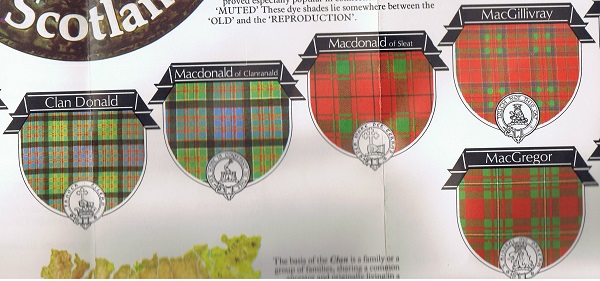
Tartans, Crests and Plant Badges, by appointment to her majesty the queen, suppliers of maps, Bartholomew, Edinburgh
The beginning of Robert Bain’s book on The Clans and Tartans of Scotland has the following humorous but realistic narrative on the Tartan by Murdoch Maclean.
MacDonald and Walton descendants, if you have any additional information on MacDonald Clans please add a comment to this web site and the web site author will add this to the site. Thanks!” (Contact Us-on upper right side of page)

